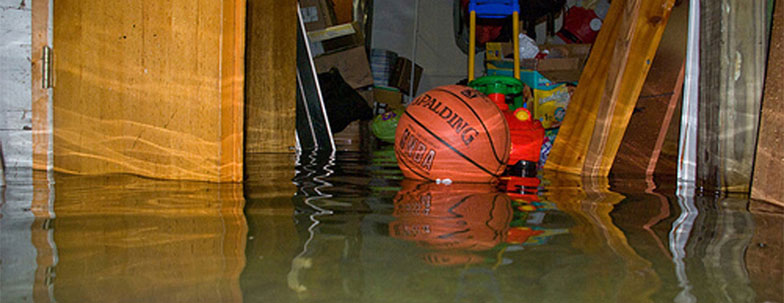Emergency Service... SUMP PUMP FAIL!!!

What's a Sump Pump?
The basics are pretty simple. A hole is dug in the lowest part of your basement or crawlspace where a sump pump sits and filters out water. As the pit fills up, the pump turns on and moves the liquid out of the pit through pipes that run away from the foundation of your home into an area where it can drain, such as a municipal storm drain or a dry well. A one-way valve (check valve) keeps water from entering back into the home.
The pump is generally powered with no special wiring; just your main household current. But being near water, or in water (in case of a failure), it's a good idea to have some type of circuit interrupter to prevent electrocution.
The majority of residential sump pumps will turn on automatically from a pressure sensor or float activator. The pressure sensor activates as water builds up and creates more pressure than air which prompts the pump to turn on. The float activator has a ball that floats on top of the water, moving the arm as the water level rises; similar to the one in your toilet tank.
How a Sump Pump works...
When the motor activates, the impeller (a fan-like device) will turn. Using centrifugal force, the spinning impeller will force the water towards the sides of the pipe, creating a low-pressure center where water from the pit rushes to while the spinning action pushes it through the pipe.
All of these things work together to keep your home dry. And for the most part, everything tends to go smoothly. But there's a lot of parts working together and if one thing quits working, or some type of outside force comes in and causes disruption, things can get back quickly.
Things that Cause Sump Pump Failure
- Power Failure
- The Sump Pump is the Wrong Size
- Improper Installation
- Switch Problems
- Lack of Maintenance
- Frozen or Clogged Discharge Lines
- Product Defect